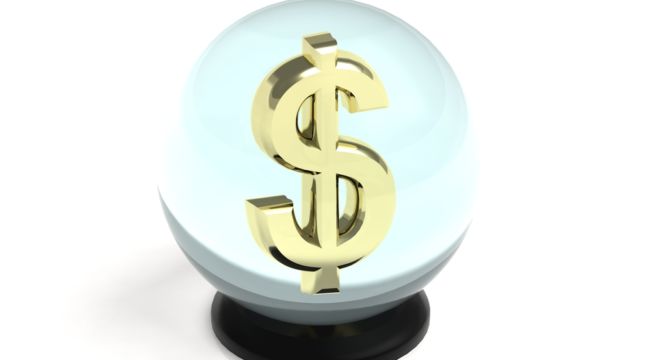Here’s Where the Stock Market’s Going
The Federal Reserve ordered seven “emergency” rate cuts since 1998. Tuesday’s was its eighth.
Going off the first seven… where will the S&P end the next 12 months?
Your choices are these:
- -9.2%
- -4.7%
- +6.1%
- +11.3%
But we are in devilish spirits today.
Let us therefore bewilder you with a fifth option: zero. The S&P will end precisely where it began.
Have you made your selection? You will have your answer shortly, your tour of the horizon.
First to a far more immediate source of bewilderment…
The seesawing market swung again today — down. And we are down with vertigo attempting to follow it one day to the next.
The Dow Jones plunged 600 points to open the day. It gave up another 369 points to end the day — a 969-point slating in all.
The S&P lost another 106 points today; the Nasdaq, 279.
Gold went rampaging again today, up another $29.00.
Meantime, the 10-year Treasury yield slipped to an impossible 0.899% this afternoon.
The mind staggers and reels.
But where does history argue the S&P will trade in one year’s time?
Again — prior to Tuesday — the Federal Reserve mandated seven “emergency” interest rate cuts since 1998.
These transpired in:
October 1998. January 2001. April 2001. September 2001. August 2007. January 2008. And October 2008.
All but two were 50 basis point hatchetings. October 1998 (25 basis points) and January 2008 (75 basis points) form the lone exceptions.
Tuesday’s emergency cut was right at par — the standard 50.
To help instruct your decision and speed you along, let us consider S&P action in the shorter term…
Deutsche Bank’s Jim Reid has ransacked the data in search of light. He first glanced one week out.
Where does the S&P stand one week after an emergency rate cut?
The answer is a 2.8% median gain.
Two trading sessions in, results do not encourage. Yet three are ahead. And time yet remains.
But let us now shimmy up the mainmast… and train our monoscope on the farther horizon.
Where does the S&P stand six months following an alarmed rate cut?
Substantially lower, according to Mr. Reid’s researches.
The answer is -4.3%.
The S&P is up 2.8% after one week, that is — but down 4.3% after six months.
But what about the entire year? Does the S&P continue to slip? Or does the seesaw swing positive again?
Or does it end flat — an entire year upon the hamster wheel?
Again… here are your choices:
- -9.2%
- -4.7%
- +6.1%
- +11.3%
- 0%
We have held you suspended in the air long enough. The answer is…
A. The S&P sheds a median 9.2% the year following an emergency rate cut.
And there you are. Thus you can expect the S&P to close March 2, 2021 near 2,760.
But one exception stands prominent… as a diamond stands prominent among the stones… as an honest congressman stands prominent among congressmen.
That lovely exception is October 1998. The S&P roared 24.1% by October 1999.
Yet this capital fact remains: The S&P ended the year down six occasions of the prior seven.
Alas, we have no corresponding data for the Dow Jones. But the two rarely fall much out of step. We can therefore assume similar results.
But comes the inevitable question:
Why doesn’t the market take to the emergency dose of cuts?
The gentlemen of Zero Hedge answer as well as anyone:
Traditionally when the Fed engages in such an unexpected move, it means that the economy (or markets, or both) are already in free fall, and the Fed is far behind the curve.
Who can be surprised?
The Federal Reserve generally lags so far “behind the curve”… it never has to turn the wheel. It goes forever on the straightaway.
But in fairness, we speak today of averages.
As we have noted before, climate is what a fellow can expect. Weather is what he actually gets.
The S&P could well burst upon a wondrous 12-month spree. It has laughed off the odds before.
Yet 22 years of history argues it will not…
Regards,
Brian Maher
Managing editor, The Daily Reckoning



Comments: